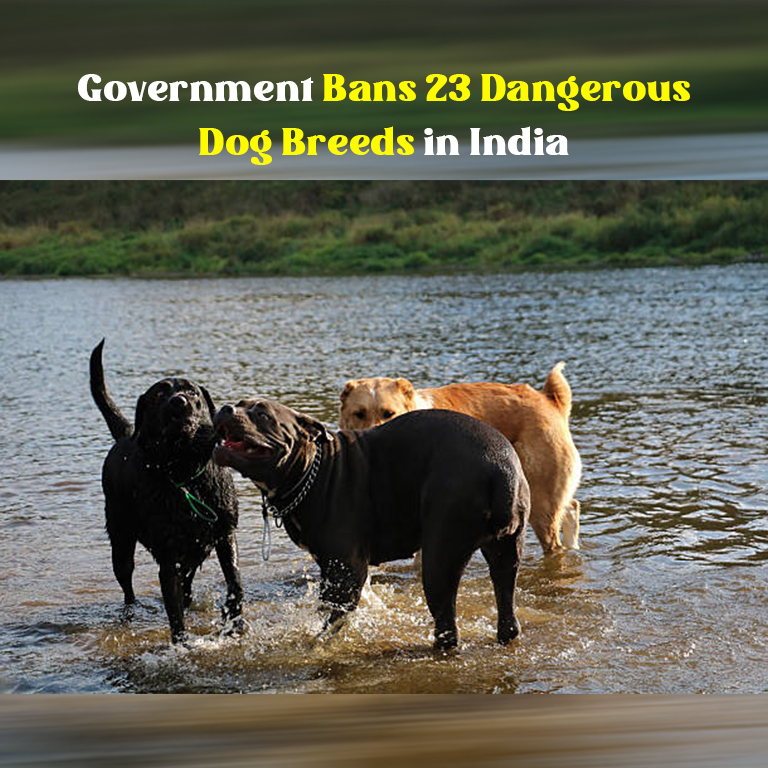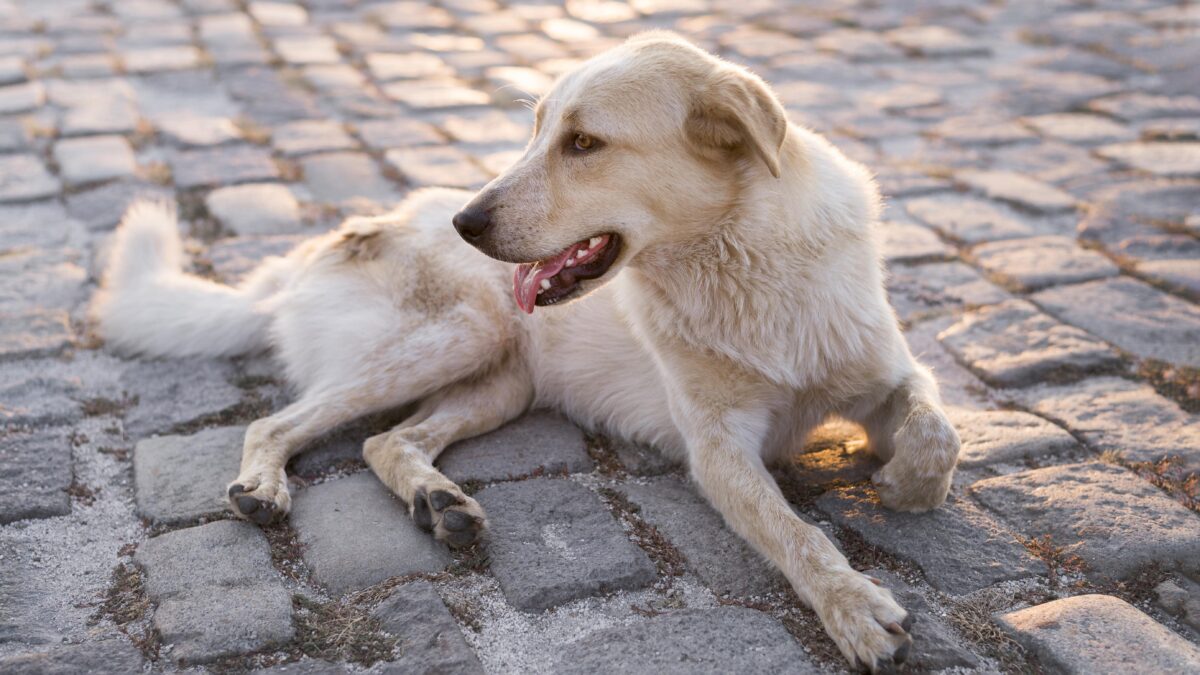Government Bans 23 Dangerous Dog Breeds in India

Dangerous dog breeds are facing increased scrutiny as public safety concerns grow. Several governments, including India’s, are actively banning specific breeds. These dogs, known for their strength and territorial nature, can pose serious risks without proper training and socialization. The following guide explores each breed’s history, traits, and the reasons behind their restrictions.
1. Pitbull Terrier
Pitbulls are muscular, highly energetic dogs originally bred for bull-baiting and dog fighting. They are loyal to their owners but can display unpredictable aggression without proper training and socialization. Known for having one of the strongest bite forces among dogs, Pitbulls have been involved in numerous attacks due to irresponsible ownership. As a result, many countries have placed strict bans on them.
2. Tosa Inu
The Tosa Inu is a Japanese breed originally bred for dog fighting. Known for its silent aggression and immense strength, this breed faces bans in many countries because of its fighting history and large size. Tosa Inus remain quiet, calculating, and fearless during combat. Their powerful build allows them to inflict serious harm.
3. American Staffordshire Terrier
Often confused with the Pitbull, this breed is strong, courageous, and protective. However, without proper training, it tends to become territorial and aggressive. Although affectionate toward family, it may react poorly to unfamiliar dogs. Many regions now label them as high-risk breeds.
4. Fila Brasileiro
Also known as the Brazilian Mastiff, this breed shows intense loyalty and a deep distrust of strangers. Its aggressive guarding instincts make it hard to manage in public spaces. Filas are extremely protective and often act without hesitation. Due to their unpredictable nature, many authorities have imposed restrictions on them.
5. Dogo Argentino
Originally bred for big game hunting, the Dogo Argentino is a powerful and athletic breed. Several countries have banned it because of its high prey drive and potential for aggression when not handled correctly. With a strong dominance streak, this breed needs experienced handlers. Poor management may result in serious incidents and legal restrictions.
6. American Bulldog
A muscular, confident breed originally used for guarding and farming. While often affectionate, it can become aggressive if not properly socialized.
They are highly energetic and need extensive training. Without boundaries, they may display aggression toward strangers.
7. Boerboel
This South African mastiff-type dog was bred to guard farms from large predators. As a result, its size and strength demand experienced handling to prevent aggression. Moreover, Boerboels are known to be territorial and wary of outsiders. Therefore, they require consistent control to avoid becoming dangerous.
8. Kangal
Originally from Turkey, the Kangal is a livestock guardian known for its protective nature and strong bite force. However, it can be aggressive toward perceived threats, including strangers. Because of this, Kangals are not ideal for urban households. In fact, their strong instincts make them difficult to manage without large open spaces.
9. Russian Shepherd (Caucasian Ovcharka)
Bred to guard livestock against wolves and bears, this dog is fiercely protective. Consequently, its natural suspicion of strangers makes it risky in urban environments. Additionally, they are highly independent and hard to train. Even worse, aggressive tendencies can be triggered by minor threats.
10. Tornjak
A Bosnian-Herzegovinian breed, the Tornjak was traditionally used for guarding livestock in mountainous areas. As a result, it is known for its independence and alertness. However, it may act aggressively if threatened. While calm around family, they can turn assertive with strangers. Therefore, Tornjaks need strong leadership to behave safely.
11. Sarplaninac
This Balkan shepherd breed is very territorial and protective. Because of its independent nature, it can be difficult to train and prone to aggression toward strangers. Nevertheless, it forms strong bonds with owners but is naturally distrustful. When provoked, its defensive instincts kick in rapidly.
12. Japanese Tosa
Another fighting dog from Japan, the Tosa Inu is large, quiet, and intimidating. Due to its fighting lineage, it is banned in several countries for safety reasons. Tosas were bred to never back down in fights. Consequently, their calm exterior can mask explosive aggression under stress.
13. Akita
Originally bred in Japan for hunting, the Akita is dignified and powerful. Although loyal, it is also reserved and may react aggressively if provoked. Akitas do not tolerate other animals well. Because of their dominant nature, aggressive standoffs may occur.
14. Mastiffs
Mastiffs have a massive build and strong protective instincts. Although they’re often gentle with family, their strength and guarding nature create challenges in public settings. Some mastiff breeds can become overly territorial. Because of their sheer size, novice owners may struggle to control aggressive behavior.
15. Rottweiler
This strong, confident working breed excels in guarding and police roles. Without firm training, it often becomes territorial and reactive. Rottweilers need extensive obedience training. Inadequate socialization causes mistrust and reactive behavior.
16. Terriers (certain aggressive subtypes)
Some terrier breeds, especially those bred for fighting or hunting, can show persistent aggression. Their small size doesn’t limit their potential danger when provoked.
Breeds like Bull Terriers can be especially reactive. Without control, they display sudden biting tendencies.
17. Rhodesian Ridgeback
Originally bred in Africa for hunting lions, this breed is fast, powerful, and protective. Its strong prey drive and independence make it difficult for first-time owners.
They are stubborn and fearless, making them hard to train. Lack of leadership can turn them unpredictable.
18. Wolf Dogs
These are hybrids between wolves and domestic dogs, and they often retain wild instincts. Their unpredictable behavior makes them unsuitable as household pets.
They are usually wary of humans and unpredictable in behavior. Legal status varies across regions due to safety concerns.
19. Presa Canario (Canario)
Bred in the Canary Islands for guarding and cattle work, this breed is muscular and dominant. Known for several fatal attacks, it is banned in multiple countries.
They are not recommended for families or beginners. Their bite force and strength demand absolute control.
20. Akbash Dog (Akb dog)
A Turkish breed used to protect livestock, it is loyal but highly suspicious of strangers. Its size and alertness can lead to aggressive defensive behavior.
They are bred to act without commands. This autonomous nature becomes dangerous in urban homes.
21. Moscow Guard Dog
A large, powerful breed developed in Russia for guarding military installations. It combines traits of the St. Bernard and Caucasian Shepherd and is extremely protective.
Their protective drive can turn aggressive with unknown visitors. Due to their size, containment is difficult in city settings.
22. Cane Corso
An Italian mastiff bred for guarding property and hunting large game. While intelligent, it requires experienced handling due to its strong protective drive.
Corsos are often reactive when challenged. Miscommunication or mishandling can lead to dangerous incidents.
23. bandog
The Bandog is not a recognized breed but a type — usually a cross between a Mastiff and a Pitbull or similar powerful dogs. It was originally bred for guarding and protection work. Bandogs are extremely strong, protective, and fearless, but their unpredictable temperament and aggression have made them banned or restricted in several regions.
Safer Dog Breeds Suited for Indian Homes
If you’re planning to adopt or buy a dog, here are some climate-friendly and beginner-safe breeds more suitable for Indian families:
Recommended breeds:
- Indie Dogs (Desi/Mongrel) – Low maintenance, highly adaptable
- Labrador Retriever – Friendly, easy to train
- Golden Retriever – Loyal and gentle with kids
- Beagle – Compact, playful, energetic
- Shih Tzu – Apartment-friendly, great with families
- Pugs, Cocker Spaniels, Indian Spitz – Suitable for smaller spaces
Final Thoughts: Awareness Before Adoption
Pet parenting is a long-term commitment, and choosing the right breed is just the beginning. India’s evolving laws aim to balance public safety with animal welfare, but navigating these changes requires responsible action from every pet owner.
Whether you already have a pet or are planning to adopt, make sure to:
- Research your breed
- Stay updated with local laws
- Prioritize safety, training, and registration





